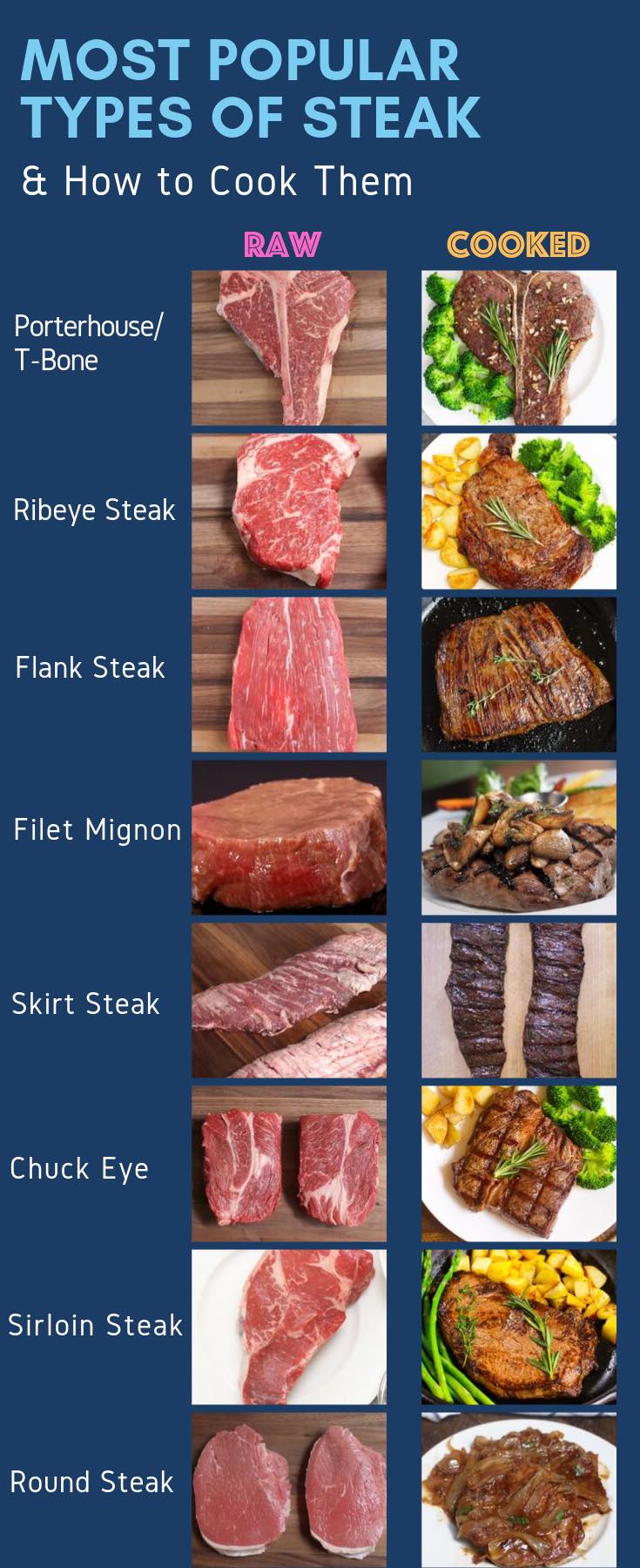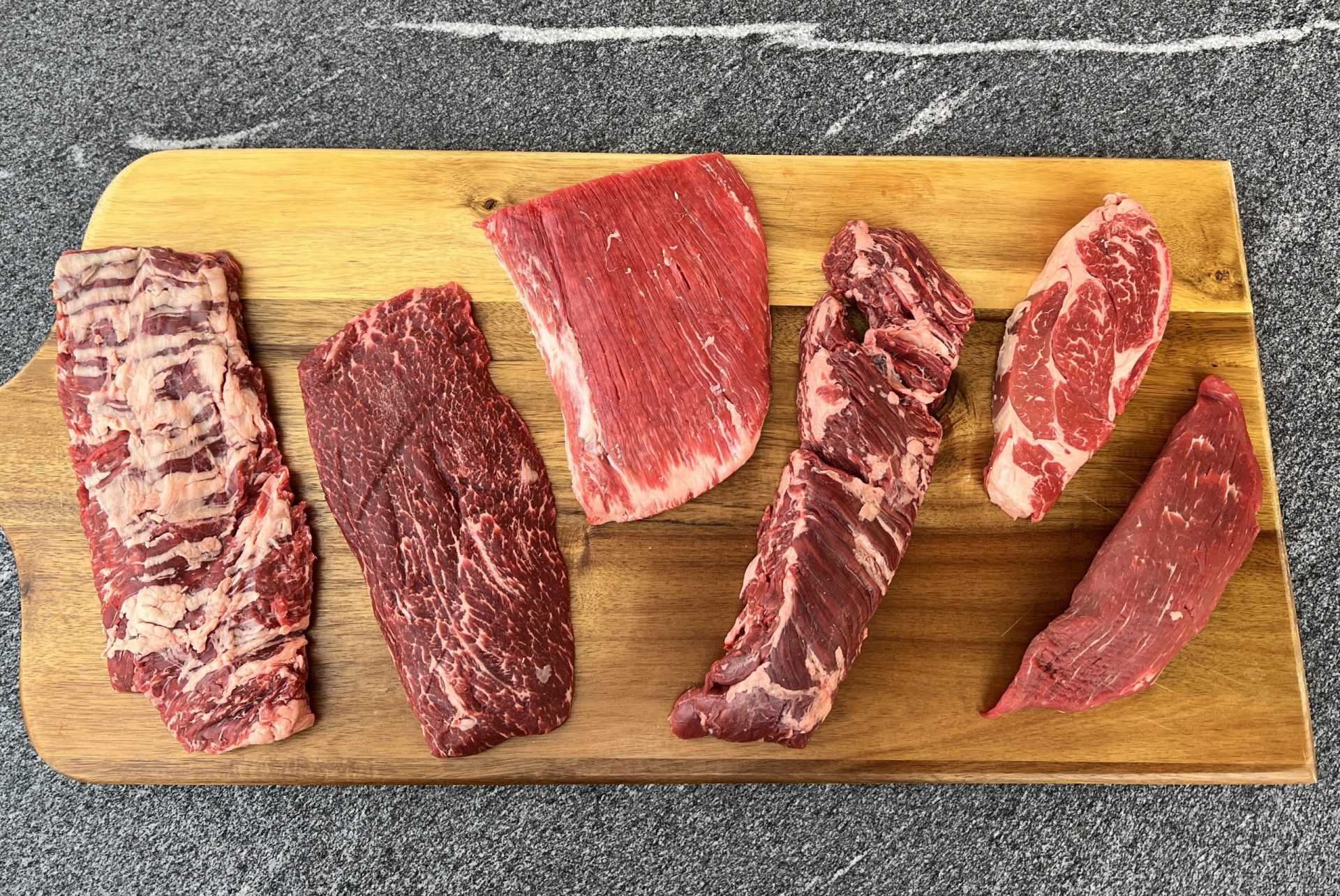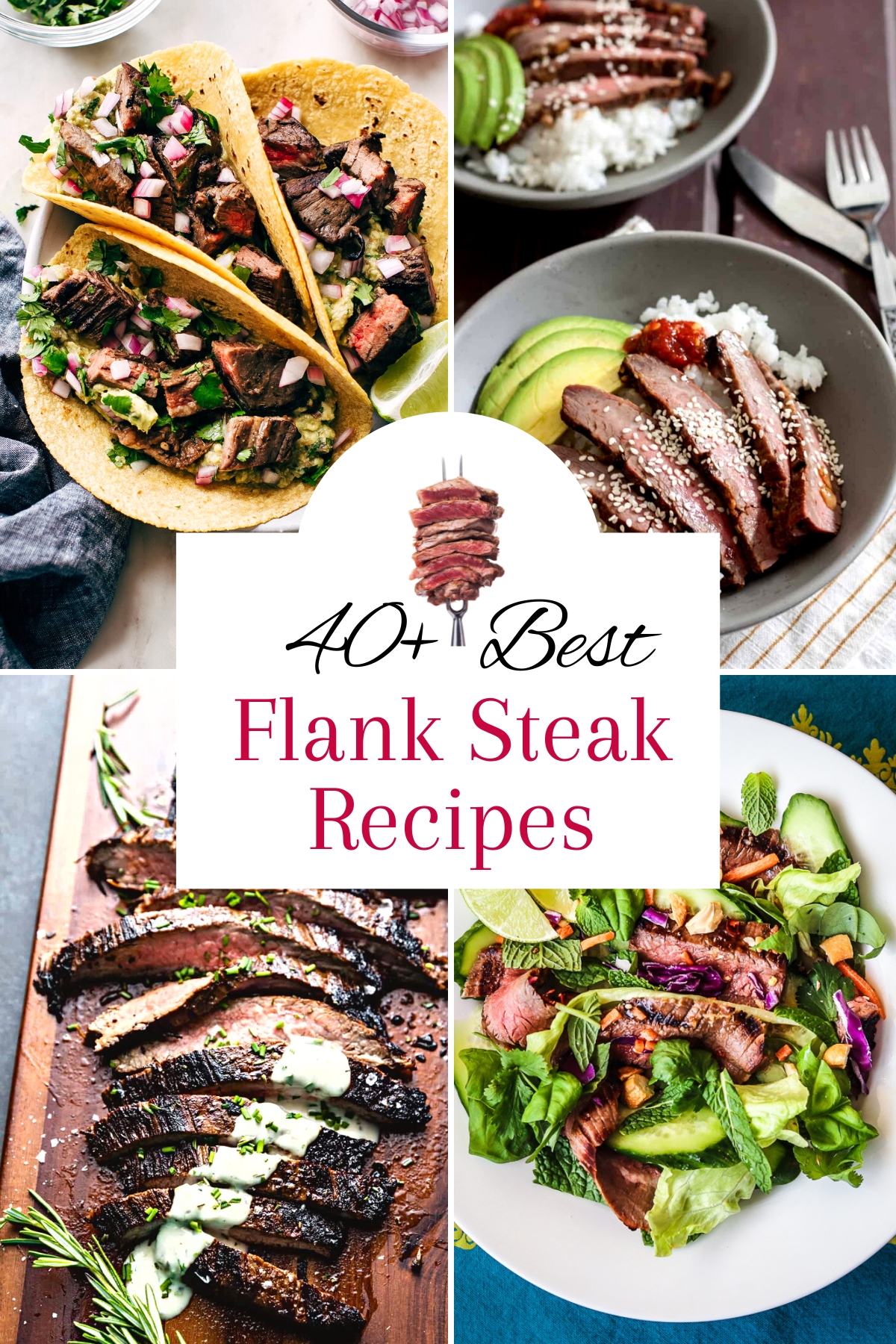
Understanding Flank And Flat Iron Steaks
Flank Steak Overview
Flank steak is a lean and flavorful cut of beef that comes from the abdominal muscles of the cow. It is long, flat, and prized for its rich beefy taste. This cut is versatile and can be used in a variety of dishes such as stir-fries, tacos, and salads. When cooked properly, flank steak is juicy and tender. It is important to slice flank steak thinly against the grain to ensure tenderness.
Flat Iron Steak Overview
Flat iron steak is a tender and well-marbled cut that comes from the shoulder of the cow. It is also known as a top blade steak. This cut is gaining popularity for its tenderness and flavor. Flat iron steak is best when cooked to medium-rare or medium as it can become tough if overcooked. Due to its marbling, flat iron steak is juicy and has a rich beef flavor.
When comparing flank steak and flat iron steak, the main differences lie in their texture and flavor. While flank steak is leaner and has a more pronounced beefy taste, flat iron steak is tender and well-marbled, resulting in a juicier bite. Both cuts benefit from marinating before cooking to enhance their flavors. Here is a comparison:
| Aspect | Flank Steak | Flat Iron Steak |
|---|---|---|
| Cut Location | Abdominal muscles | Shoulder area |
| Texture | Lean and fibrous | Tender and well-marbled |
| Flavor | Rich and beefy | Juicy with a rich beef flavor |
| Best Cooking | Sliced thinly against the grain, Cooked to medium-rare for tenderness | Cooked to medium-rare for optimal juiciness |
Flank Steak Characteristics And Cooking Methods
Flank Steak Flavor And Texture
Flank steak is known for being a lean and fibrous cut that boasts a rich and beefy flavor profile. Its long, flat shape and pronounced grain make it a popular choice for a variety of dishes.
Best Cooking Techniques For Flank Steak
When cooking flank steak, it is important to slice it thinly against the grain to ensure tenderness. Aim for a medium-rare doneness to bring out the best flavors and juiciness of this cut. This cut benefits from marinating to enhance its natural beefy taste.
| Aspect | Flank Steak | Flat Iron Steak |
|---|---|---|
| Cut Location | Abdominal muscles | Shoulder area |
| Texture | Lean and fibrous | Tender and well-marbled |
| Flavor | Rich and beefy | Juicy with a rich beef flavor |
| Best Cooking | Sliced thinly against the grain, Cooked to medium-rare for tenderness | Cooked to medium-rare for optimal juiciness |
Flat Iron Steak Characteristics And Cooking Methods
Flat Iron Steak Marbling And Tenderness
Flat iron steak is prized for its tender and well-marbled texture. Derived from the shoulder area, this cut features intricate marbling that enhances its juiciness and flavor. Unlike flank steak, flat iron steak offers a more velvety mouthfeel due to its higher fat content.
Recommended Cooking Methods For Flat Iron Steak
When preparing flat iron steak, it is best to cook it to medium-rare to fully enjoy its juicy and rich beef flavor. Due to its higher fat content, this cut can be cooked to a slightly higher doneness without compromising its tenderness. Slicing flat iron steak thinly against the grain can further elevate its already superb texture.
| Aspect | Flank Steak | Flat Iron Steak |
|---|---|---|
| Cut Location | Abdominal muscles | Shoulder area |
| Texture | Lean and fibrous | Tender and well-marbled |
| Flavor | Rich and beefy | Juicy with a rich beef flavor |
| Best Cooking | Sliced thinly against the grain, Cooked to medium-rare for tenderness | Cooked to medium-rare for optimal juiciness |

Flavor Profiles Of Flank And Flat Iron Steaks
Flank Steak Taste Profile
In terms of flavor, flank steak is known for its rich and beefy taste. This cut comes from the abdominal muscles of the cow, offering a lean and fibrous texture. When cooked to medium-rare and sliced thinly against the grain, flank steak can be tender and flavorful, making it a popular choice for various dishes.
Flat Iron Steak Flavor Comparison
Flat iron steak stands out for its juicy and rich beef flavor. Coming from the shoulder area, this cut boasts a tender and well-marbled texture. Its intricate marbling enhances the juiciness and creates a velvety mouthfeel. When cooked to medium-rare, flat iron steak retains its optimal juiciness while delivering a superb beef flavor that is both savory and satisfying.
| Aspect | Flank Steak | Flat Iron Steak |
|---|---|---|
| Cut Location | Abdominal muscles | Shoulder area |
| Texture | Lean and fibrous | Tender and well-marbled |
| Flavor | Rich and beefy | Juicy with a rich beef flavor |
| Best Cooking | Sliced thinly against the grain, Cooked to medium-rare for tenderness | Cooked to medium-rare for optimal juiciness |
Health Benefits And Nutritional Value
Nutritional Value Of Flank Steak
Flank steak offers a range of key nutrients. It is a good source of protein, essential for muscle building and repair. Additionally, it contains iron, essential for oxygen transport in the body, and zinc, crucial for immune function and wound healing. Flank steak is relatively low in calories and fat, making it a suitable option for those looking to maintain a healthy diet.
Nutritional Benefits Of Flat Iron Steak
Flat iron steak is also packed with essential nutrients. It provides high-quality protein, aiding in muscle maintenance and growth. Moreover, flat iron steak is a good source of iron, vital for preventing anemia and supporting overall energy levels. It also contains B vitamins like niacin and vitamin B12, necessary for metabolism and neurological health.
| Aspect | Flank Steak | Flat Iron Steak |
|---|---|---|
| Cut Location | Abdominal muscles | Shoulder area |
| Texture | Lean and fibrous | Tender and well-marbled |
| Flavor | Rich and beefy | Juicy with a rich beef flavor |
| Best Cooking | Sliced thinly against the grain, Cooked to medium-rare for tenderness | Cooked to medium-rare for optimal juiciness |
Purchasing And Preparing Flank And Flat Iron Steaks
How To Select Quality Flank Steak
When choosing flank steak, look for cuts that have a bright red color and minimal visible fat. The meat should appear firm to the touch. Additionally, ensure there is no discoloration or off-putting odor, indicating freshness. Opt for cuts that are evenly thick for more consistent cooking results. It is advisable to buy flank steak from reputable butchers or stores known for their quality meat selection.
Preparation Tips For Flat Iron Steak
Flat iron steak benefits from simple seasoning to enhance its natural flavors. Consider using a marinade with acidic ingredients like balsamic vinegar or citrus juices to tenderize the meat. Prior to cooking, allow the steak to come to room temperature for more even cooking. When preparing flat iron steak, ensure not to overcook it to maintain its tenderness and juiciness. Resting the steak after cooking allows the juices to redistribute, resulting in a more succulent meal.
The comparison between flank steak and flat iron steak reveals distinct differences in taste, texture, and optimal cooking methods. While flank steak is lean and rich in beefy flavor, flat iron steak is tender and juicy with marbling for added flavor. Both cuts offer nutritional benefits, with flank steak providing a leaner option and flat iron steak being more indulgent. Understanding the characteristics of each cut allows for the selection of the ideal steak based on personal preferences and cooking techniques.

Recipes And Serving Suggestions
Delicious Flank Steak Recipe Ideas
When choosing flank steak, one should look for cuts with a bright red color, minimal visible fat, and a firm texture. It is important to select cuts that are evenly thick for consistent cooking. Quality flank steak can be used in a variety of recipes such as Grilled Flank Steak with Chimichurri Sauce, Asian-Style Beef Stir Fry with Flank Steak, or Flank Steak Tacos with Homemade Salsa. These recipes allow the natural beefy flavor of the flank steak to shine through while incorporating different seasonings and cooking techniques.
Creative Ways To Serve Flat Iron Steak
Flat iron steak benefits from simple seasoning and can be served in various creative ways. Consider trying Flat Iron Steak Salad with Blue Cheese Dressing, Flat Iron Steak Sandwiches with Caramelized Onions, or Flat Iron Steak Skewers with Chimichurri Dip. These dishes showcase the tenderness and juiciness of flat iron steak, making it a versatile option for different meals. Experimenting with flavors and presentations can elevate the dining experience when serving flat iron steak.
The comparison between flank steak and flat iron steak highlights their unique characteristics in taste, texture, and cooking methods. While flank steak offers a lean and beefy flavor profile, flat iron steak is known for its tenderness and juiciness. Both cuts have their nutritional benefits, with flank steak being a leaner option and flat iron steak providing a more indulgent experience. Understanding these differences allows individuals to choose the steak cut that best suits their preferences and culinary needs.
Choosing Between Flank And Flat Iron Steaks
Factors To Consider When Choosing The Right Cut
When selecting between flank steak and flat iron steak, several factors should be taken into consideration. Flank steak is characterized by its lean texture and robust beefy flavor. It is best suited for grilling or slicing thinly against the grain for dishes like stir-fries. On the other hand, flat iron steak is known for its tenderness and juicy consistency. This cut is ideal for quick cooking methods like grilling, pan-searing, or broiling. Consider the desired cooking technique and flavor profile when deciding between these two steak options.
Which Cut Is Best For Your Culinary Preferences
For individuals who prefer a leaner option with a pronounced beef flavor, flank steak is the way to go. It shines in dishes where the meat’s natural taste takes center stage, such as grilled preparations or tacos. On the other hand, if you prioritize tenderness and juiciness in your steak dishes, flat iron steak is the ideal choice. Its versatility allows for a wide range of culinary interpretations, from salads to sandwiches. Choose the cut that aligns with your culinary preferences and the dish you plan to create.
Overall, understanding the unique characteristics and cooking methods of flank steak and flat iron steak can help you make an informed decision based on your taste preferences and desired dining experience. Whether you opt for the lean beefiness of flank steak or the tender juiciness of flat iron steak, both cuts offer delicious options for creating memorable meals.
Conclusion
Summary Of Differences Between Flank And Flat Iron Steaks
Flank steak is known for its lean texture and robust beefy flavor, making it perfect for grilling or slicing thinly for dishes like stir-fries. In contrast, flat iron steak is prized for its tenderness and juicy consistency, ideal for quick cooking methods such as grilling, pan-searing, or broiling. The choice between the two cuts ultimately depends on individual preferences for flavor, texture, and cooking techniques.
Choosing The Perfect Cut For Your Next Meal
When selecting between flank steak and flat iron steak, consider your culinary preferences and desired dining experience. If you prefer a leaner cut with a pronounced beef flavor, flank steak is the ideal choice. On the other hand, if tenderness and juiciness are top priorities, flat iron steak is the way to go. Both cuts offer delicious options for creating memorable meals, so choose the one that best suits your tastes and the dish you plan to prepare.
FAQ About Flank Vs Flat Iron Steak: Choosing The Perfect Cut
Q: What is the difference between flank steak and flat iron steak?
A: Flank steak comes from the abdominal muscles of the cow, is lean with a bold flavor, while flat iron steak is from the shoulder area, marbled with fat for tenderness and great flavor.
Q: How should I cook flank steak vs flat iron steak?
A: Flank steak is best when marinated and grilled to medium-rare, while flat iron steak can be pan-seared or grilled to medium for optimal tenderness.
Q: Which steak is more affordable, flank, or flat iron?
A: Flank steak is typically more affordable than flat iron steak due to its leaner nature and being less tender. However, both cuts are reasonably priced compared to other premium steaks.
Q: Are flank and flat iron steaks suitable for grilling?
A: Yes, both flank and flat iron steaks are excellent choices for grilling due to their texture and ability to absorb flavors from marinades or seasonings.
Q: How can I determine the best cut between flank and flat iron steak for a recipe?
A: Consider the texture and flavor profile you desire in your dish. If you prefer a leaner, bold-flavored steak, go for flank. For a more tender and marbled option, choose flat iron steak. Ultimately, the cooking method and personal preference play a major role in selecting the perfect cut.

Gourmet Tiger, a culinary sensation, was established with a vision to delight taste buds and create unforgettable dining experiences. Specializing in cakes, casseroles, lunch, catering, and more, Gourmet Tiger has become a household name synonymous with exquisite flavors and impeccable service. Since its inception, Gourmet Tiger has been dedicated to crafting delectable treats and savory dishes that exceed expectations. Their commitment to using only the finest ingredients and innovative culinary techniques has set them apart as a leader in the food industry.